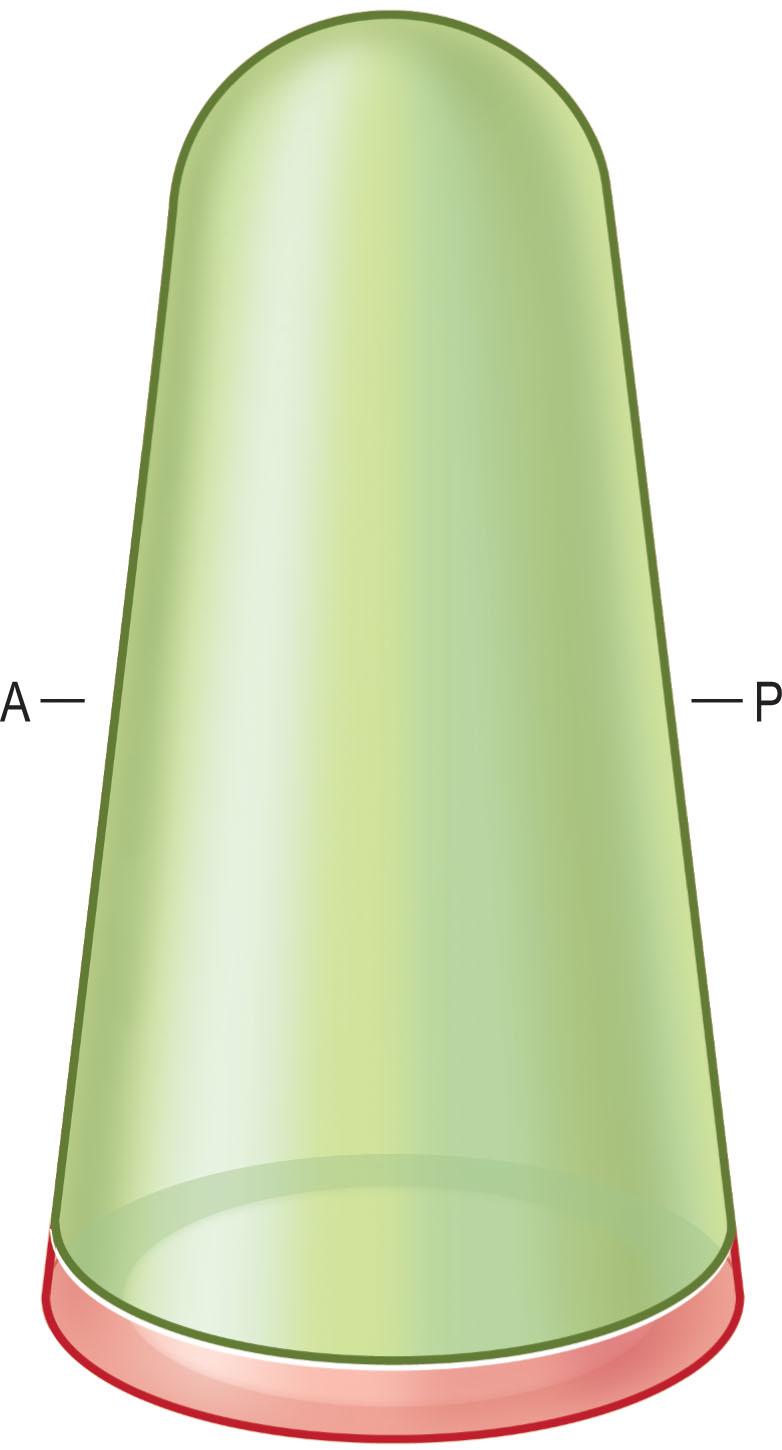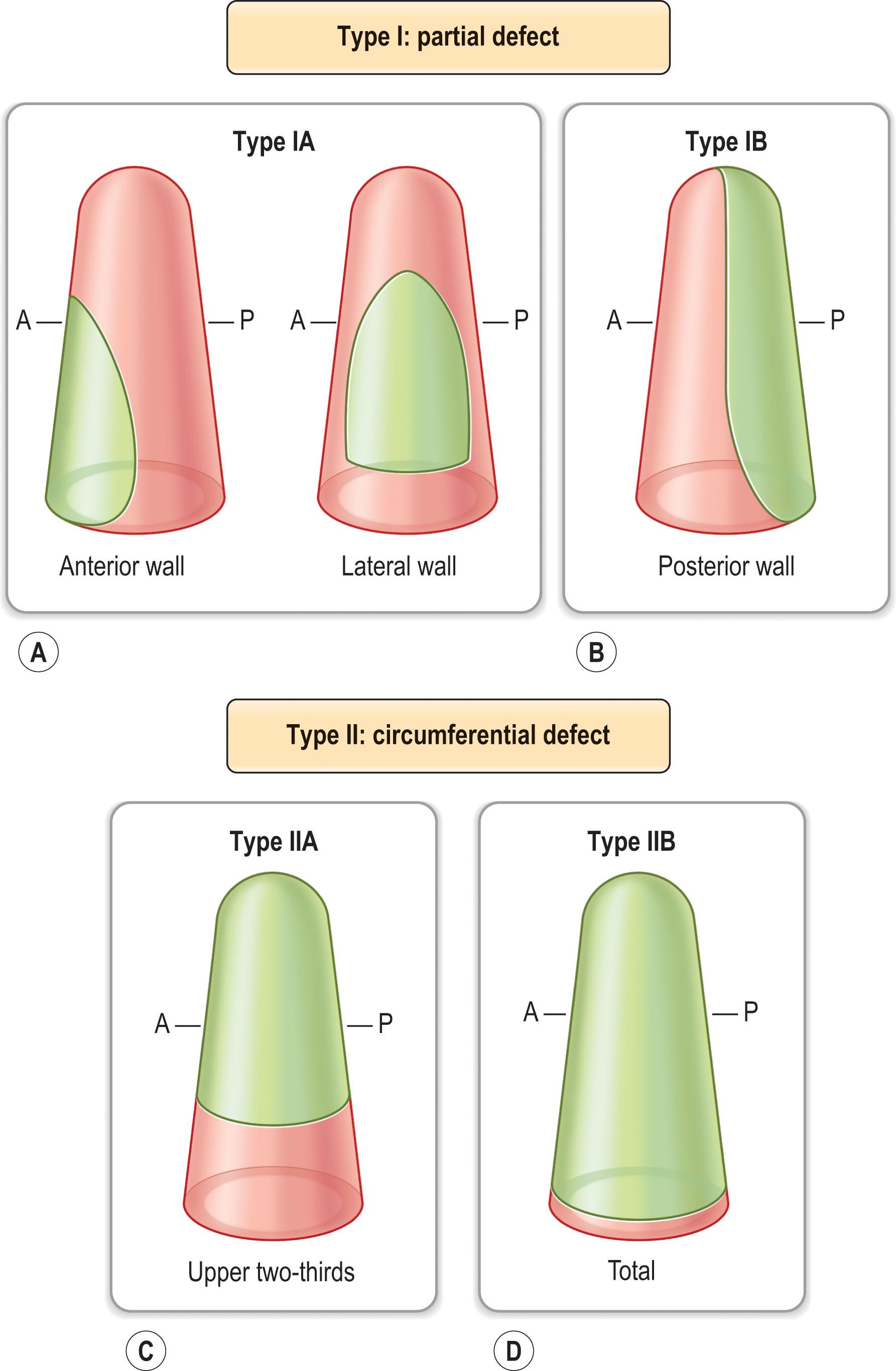Physical Address
304 North Cardinal St.
Dorchester Center, MA 02124
![]() Access video lecture content for this chapter online at Elsevier eBooks+
Access video lecture content for this chapter online at Elsevier eBooks+
Acquired vaginal defects most commonly result from the resection of pelvic malignant neoplasms. Advanced colorectal carcinomas frequently involve the posterior vaginal wall. Carcinoma of the bladder may extend into the anterior vaginal wall. Primary tumors of the vaginal wall may result in any number of vaginal defects. Local extension or recurrence of uterine or cervical malignant neoplasms can necessitate pelvic exenteration and total vaginal resection. Trauma or burns to the vaginal area may also result in vaginal distortion; however, the relatively protected position of the vagina makes these deformities much less common.
Irrespective of their etiology, vaginal defects may range from a small mucosal defect to total circumferential loss. In addition, tumor ablation may necessitate the resection of nearby pelvic contents and/or vulvar and perineal tissue. The subsequent pelvic dead space or resulting perineal defects are critical considerations in the final reconstruction.
![]() Access the Historical Perspective section online at Elsevier eBooks+
Access the Historical Perspective section online at Elsevier eBooks+
The close anatomic relationship between the bladder, vagina, and rectum needs to be well appreciated by the reconstructive surgeon. Ligamentous support of these organs is interrelated, and surgical dissection of any one structure may lead to prolapse and herniation of the remaining components. In addition, pelvic exenteration may disrupt or devascularize the pelvic floor musculature. The pelvic sidewalls define a fixed anatomic space that, once cleared of the pelvic organs, will either delineate a dead space or invite small-bowel prolapse and adhesions.
The vagina is essentially a distensible cylindrical pouch ( Fig. 15.1 ). Normal length is 6–7.5 cm along its anterior wall and 9 cm along the posterior wall. It is constricted at the introitus, dilated in the middle, and narrowed near its uterine extremity. In its normal anatomic position, the vagina tilts posteriorly as it extends up into the pelvis, forming a 90° angle with the uterus. Careful orientation of the neovagina is important to successful reconstruction and ultimate sexual function. The introitus is a frequent site of contracture after reconstruction, and any distortion of its normal position relative to other structures such as the urethral orifice, perineal body, and anus should be addressed. If no resection of the external vulva and perineum is required, great care must be taken to avoid their distortion because this may also have an impact on sexual function and body image.

The classification of acquired vaginal defects is based on their anatomic location ( Fig. 15.2 ). This classification will help to guide reconstructive efforts. There are two basic types of vaginal defects: partial (type I) and circumferential (type II). These basic types can be further subclassified. Type IA defects are partial, and involve the anterior or lateral wall. These defects may result from the resection of urinary tract malignant neoplasms or primary malignant neoplasms of the vaginal wall. Type IB defects are partial, and involve the posterior wall. These defects, which tend to be the most common type of vaginal defect requiring reconstruction, result primarily from extension of colorectal carcinomas. Type IIA defects are circumferential defects involving the upper two-thirds of the vagina. These defects are typically the result of uterine and cervical diseases. Type IIB defects are circumferential, total vaginal defects that are commonly the result of pelvic exenteration. These defects result in considerable soft-tissue loss, dead space, as well as distortion of the introitus.

In addition to the vaginal defect one must consider the extent of the pelvic dead space in ablative surgeries such as abdominal perineal resection (APR) and pelvic exenterations. In an APR the entire rectum, anal canal, and anus are removed and a permanent colostomy is created. When pelvic exenteration is performed all the organs from the pelvic cavity are removed. The urinary bladder, urethra, rectum and anus are removed in addition to the vagina, cervix, uterus, fallopian tubes, ovaries, and in some women, the vulva, and in men, the prostate. In this procedure both a colostomy and urinary diversion are created.
Whereas small partial vaginal defects are common and usually repaired primarily, larger defects caused by ablative surgeries such as abdominal perineal resections (APRs) and pelvic exenterations usually require flap reconstruction.
APRs are performed for very low rectal tumors. In this procedure, the entire rectum, anal canal, and anus are removed, and a permanent colostomy is created. Perineal wound complications such as delayed healing and infection are common in these patients, especially those who have undergone irradiation. Major wound complications have been reported in 20%–51% of patients following APR when defects have been closed primarily. When APR was first described in 1908, the perineal wound was left open and allowed to heal by secondary intention. This approach led to serious morbidity associated with delayed wound healing, and was subsequently replaced by primary closure with suction drains and then delayed reconstruction. This approach was also problematic, especially for irradiated wounds as the wounds broke down commonly and delayed reconstruction was difficult. Today, immediate local or regional flaps are the most common approach to managing these large APR defects.
Pelvic exenteration (PEX) may be required when rectal cancers have invaded adjacent structures such as the uterus or bladder. In these cases, a partial or total vaginectomy is often necessary. When pelvic exenteration was first performed in the 1940s, the operative mortality was greater than 20%. Today, perioperative mortality is 2%–4%. The historical approach to these defects is similar to that of the APR defect: wounds left open to heal by secondary intention, or primary closure over drains with delayed reconstruction if the wound broke down. Today, many APR and PEX defects are immediately reconstructed using flaps. Despite the change in approach to these defects, close to 50% of patients experience postoperative complications within 30 days of the procedure. Even with immediate flap reconstruction to improve vascularity and to decrease dead space, wound complications occur in 20%–30% of these patients. Other significant complications include infection, intestinal adhesions, fistulas, and pelvic herniation.
Become a Clinical Tree membership for Full access and enjoy Unlimited articles
If you are a member. Log in here